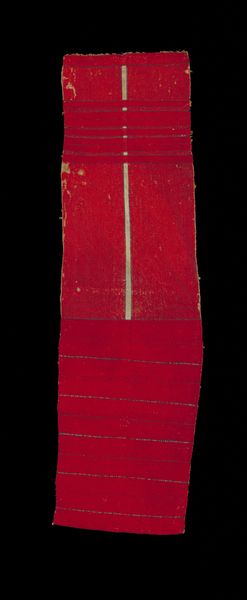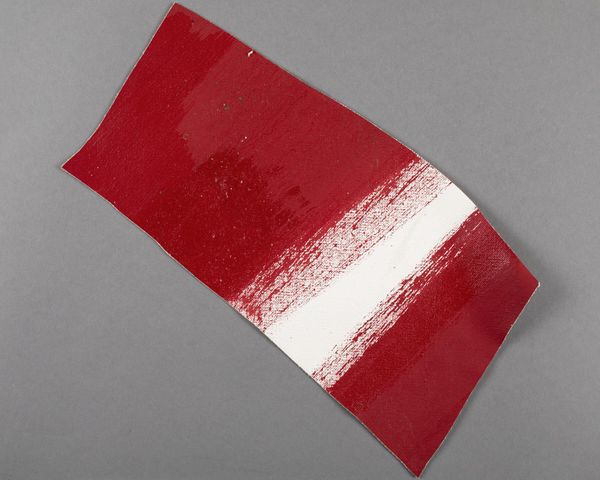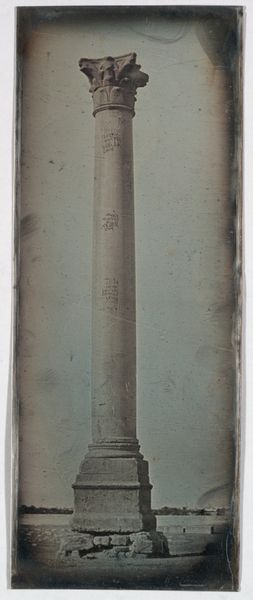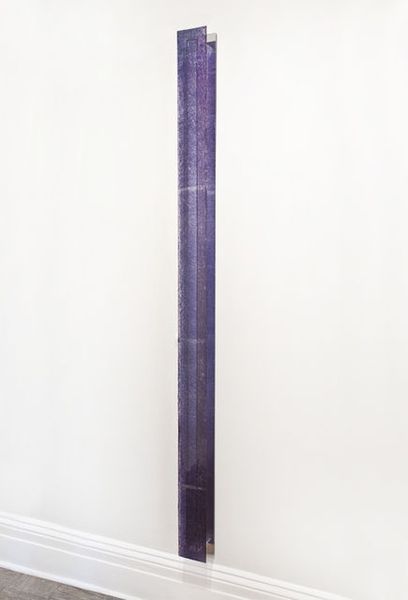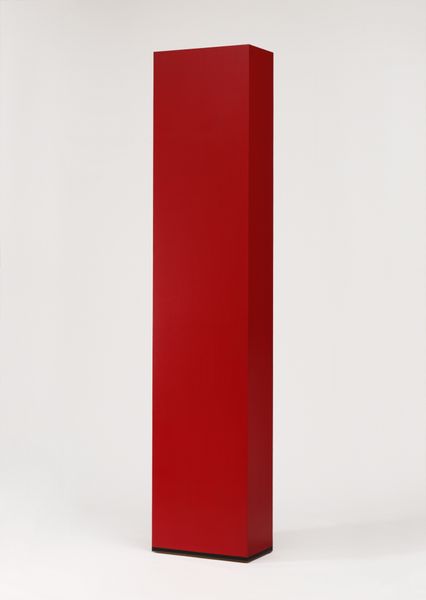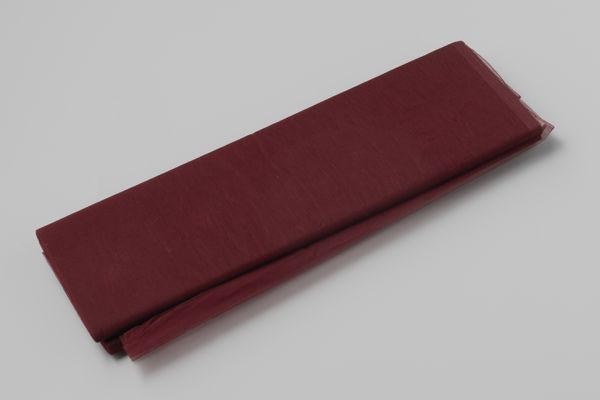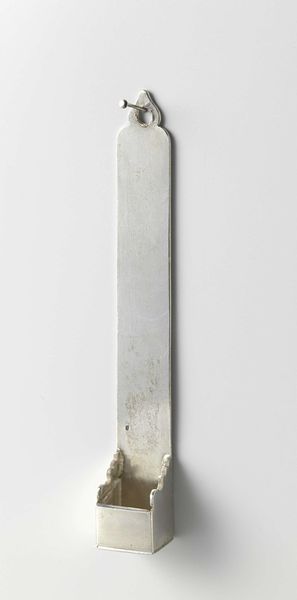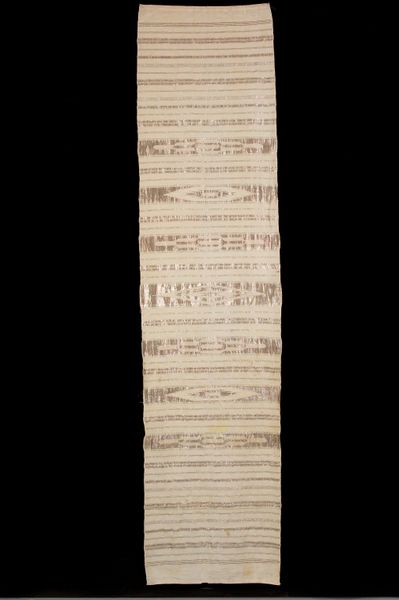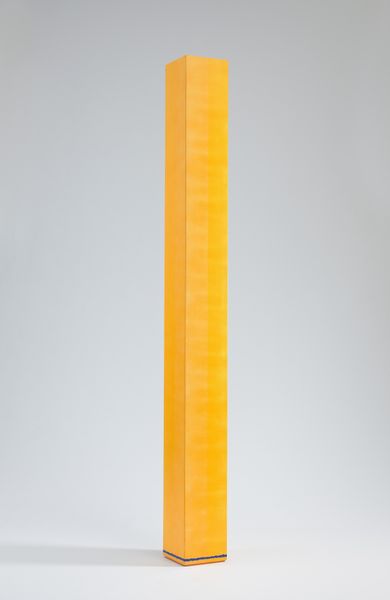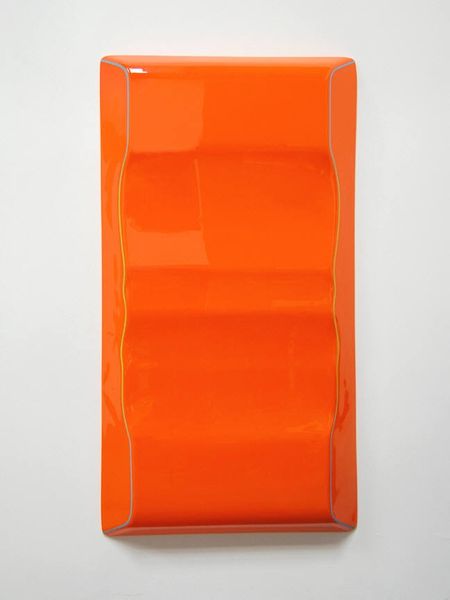
Dimensions: 238.76 x 76.2 cm
Copyright: Kaloust Guedel,Fair Use
Editor: We're looking at Kaloust Guedel's "Excess #278" from 2015, a mixed-media piece including acrylic paint. I’m struck by the interplay of textures - the smooth, glossy surface contrasted with what seems like draped plastic. How do you approach analyzing something like this? Curator: We begin with the formal elements. Note the primarily vertical composition, interrupted by a diagonal truncation at the top. The artist has created a tension between the planar surface of the support and the illusion of depth through layered materials. The dominance of red, its gradation from intense saturation to almost grey, directs the eye, wouldn’t you agree? Editor: I do, it almost feels like the red is being diluted. What about the "excess" mentioned in the title? Does that have a visual representation? Curator: Precisely. Observe the accumulation of material, specifically the plastic sheeting both adhered to and pooling beneath the central form. Consider how the artist employs this, the plastic's inherent qualities—its transparency, its ability to conform, its almost disposable nature—to interact with the painted surface. This interplay complicates our reading. What relationship can we extract? Editor: Maybe it is contrasting the permanency of the painting with the impermanence of the plastic? The tension you described earlier creates a kind of balance of opposites? Curator: A plausible thesis. The formal analysis provides a pathway to explore the work's conceptual framework, which in this case, is centered on materiality and process, a nod perhaps to the legacies of Abstract Expressionism, where the act of creation is foregrounded. The artist invites us to consider not just what is depicted, but also how it came to be. Editor: So, by focusing on the material and the form, we are not just seeing a painting, but also understanding the artist's process and ideas? That’s fascinating! Curator: Indeed. Formal analysis, in essence, equips us with the vocabulary to decode the artwork's language, allowing a more profound understanding beyond the immediately visible.
Comments
No comments
Be the first to comment and join the conversation on the ultimate creative platform.


